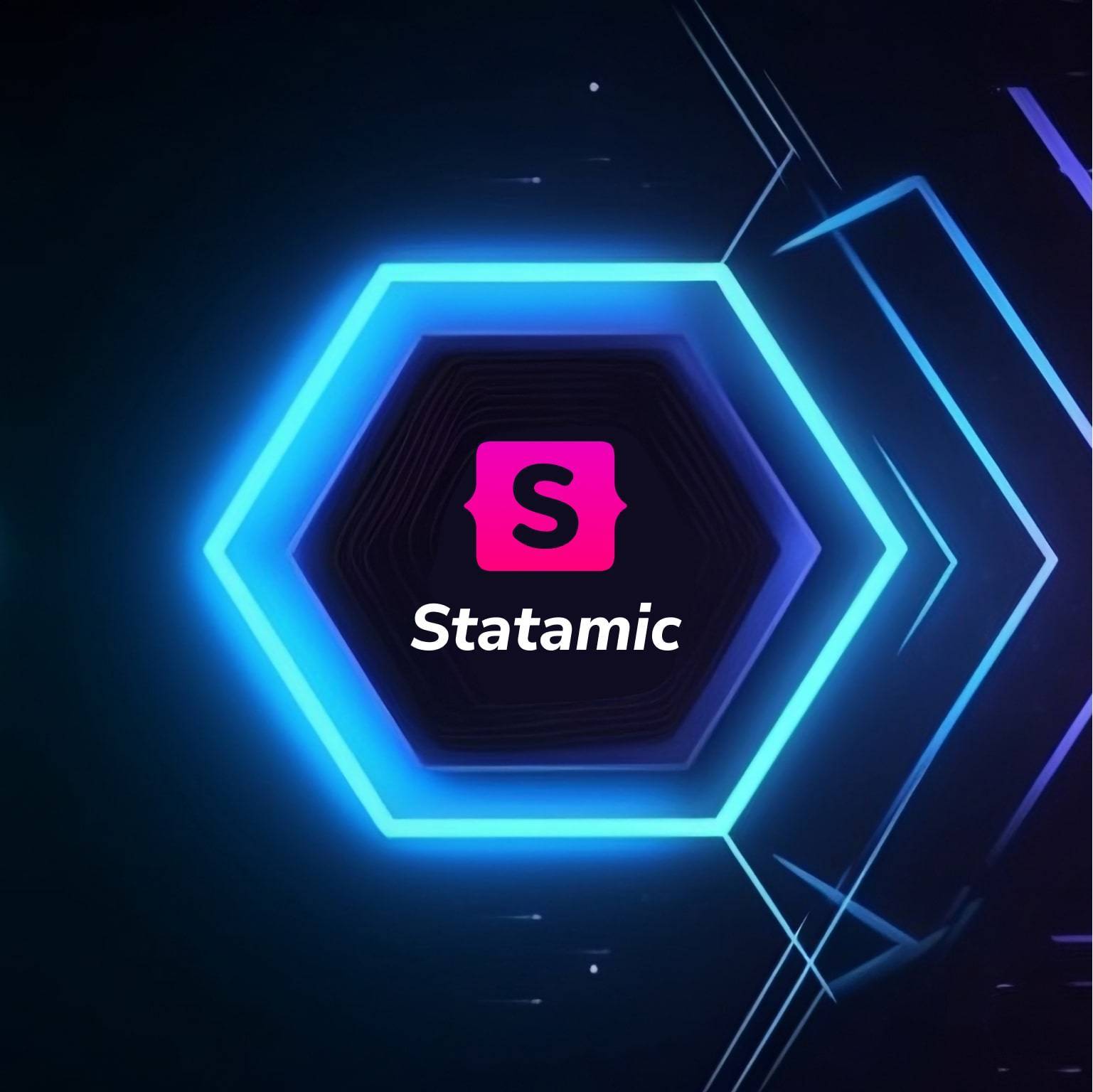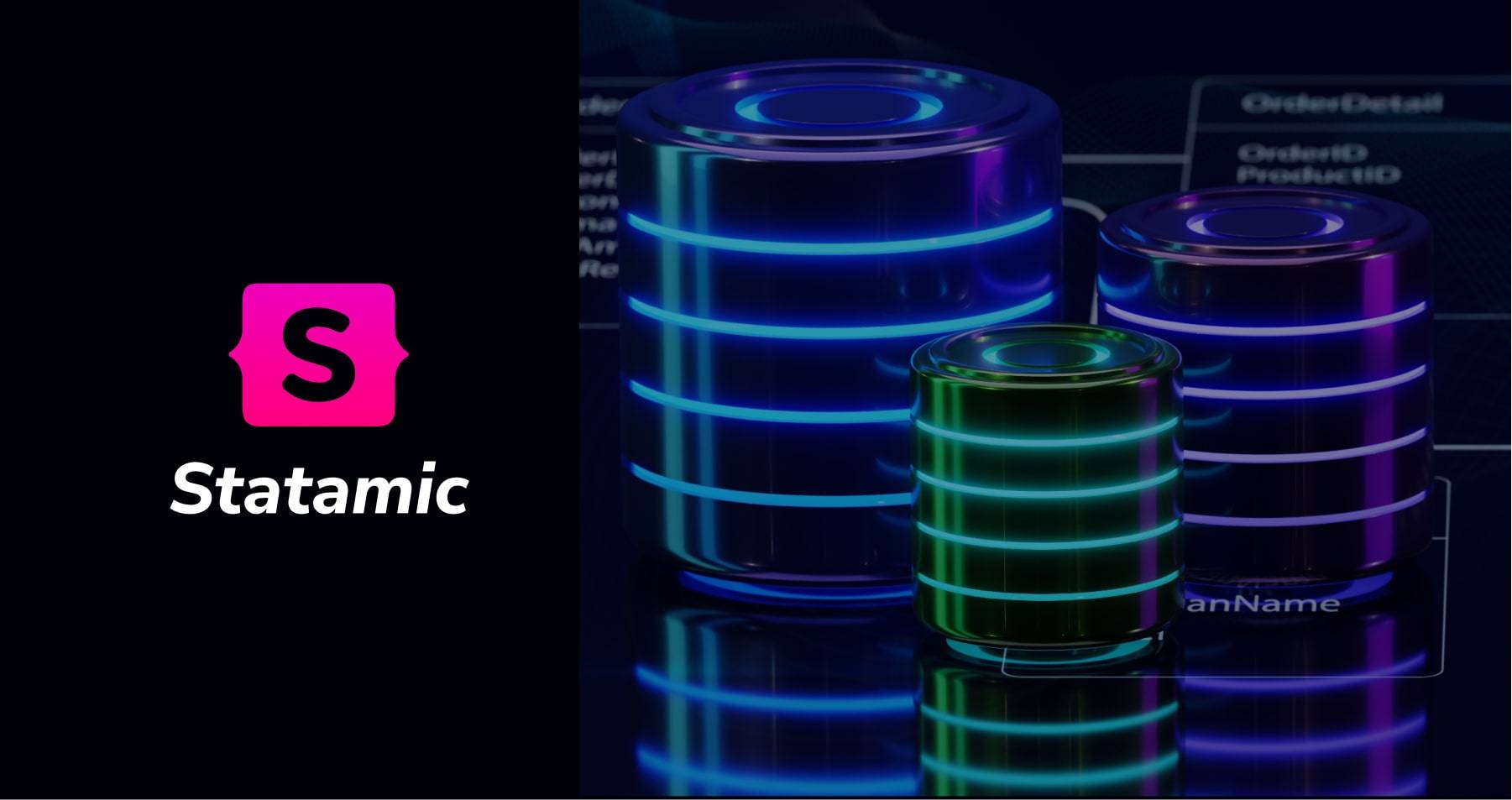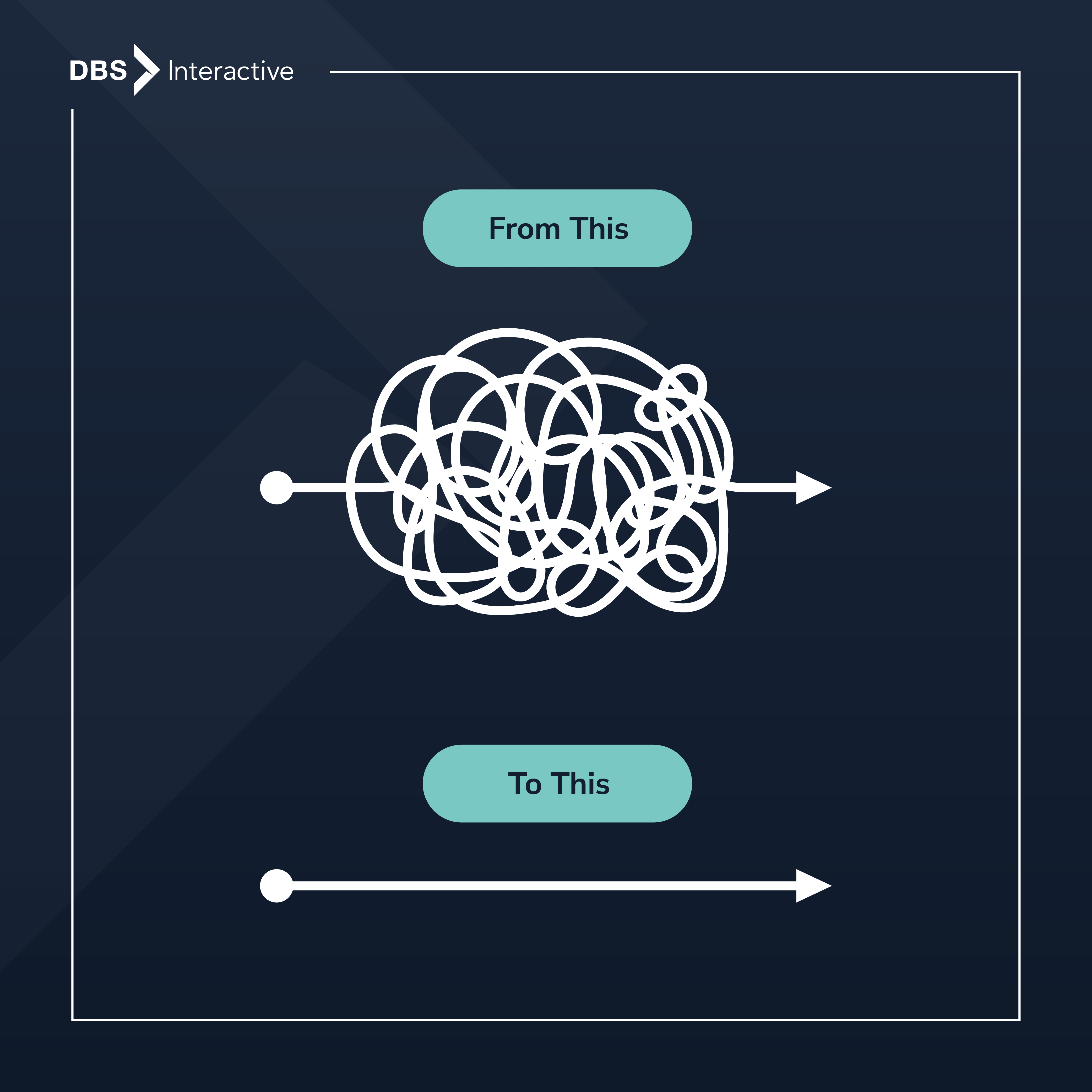

Why Should a Business Use Statamic?
In a complex digital landscape, businesses need a management system (CMS) that aligns with their unique needs and goals. They often overlook Statamic, an effective, unconventional player.
Unlike traditional CMS platforms relying on databases and SQL, Statamic follows a flat-file approach, offering simplicity, efficiency, and, most importantly, security. Explore Statamic CMS and learn from the successes of companies that have embraced this simple yet powerful tool.
Statamic’s architecture couldn’t be more different from content management systems like WordPress and Drupal. It’s important to understand how the mechanics offer unique advantages.
For a business to effectively evaluate Statamic, it’s important to know the fundamental difference between the platform and other content management systems like WordPress or Drupal.
Understanding Traditional CMS and Databases

Traditional CMS platforms, with their reliance on databases and SQL, have long dominated the market. Despite powerful features, they can be complex and resource-intensive.
Maintaining and scaling traditional database-driven CMS systems often requires dedicated technical expertise and resources. Businesses should consider the long-term costs and challenges associated with managing and scaling such systems.
Evaluate the maintenance and scalability challenges carefully when considering traditional database-driven CMS platforms.
Advantages of Statamic's Flat-File Content Management System
 Enter Statamic—a unique architecture that revolutionizes content management. Statamic relies on a flat-file structure, meaning the system stores content and configuration in simple flat files to minimize complexity and optimize performance.
Enter Statamic—a unique architecture that revolutionizes content management. Statamic relies on a flat-file structure, meaning the system stores content and configuration in simple flat files to minimize complexity and optimize performance.
With Statamic, there's no need for a separate database server, reducing infrastructure and maintenance costs. The flat-file approach also makes deployment and migration seamless since it eliminates the need to transfer database content.
Simplify your website backups and disaster recovery by leveraging Statamic's flat-file approach. Since Statamic stores content and configuration in simple flat files, you can easily create backups by copying these files, ensuring you have a reliable and efficient method to restore your website in case of data loss or system failure.
Benefits of Statamic's Flat-File Approach
Among the numerous advantages of Statamic's flat-file structure, the platform significantly improves website speed and performance. By eliminating the need for complex database queries, Statamic reduces page load times, resulting in a seamless user experience.
Caching frequently accessed or dynamically generated content, you can reduce the need for repetitive processing resulting in faster page load times and an improved user experience.
Streamlined Content Management
Statamic simplifies content management with its intuitive interface, empowering businesses to streamline content creation and publication processes. Many organizations have embraced Statamic to streamline content management workflows. With Statamic's user-friendly interface, they empower their content teams, allowing them to create, edit, and publish content efficiently.
Businesses can enhance their content management efficiency by utilizing Statamic's content collections feature. By organizing and categorizing content, businesses can easily navigate and manage their vast content libraries.
Customization and Design Freedom
One of the key strengths of Statamic is its flexibility and design freedom. Statamic’s templating system allows businesses to create unique and visually stunning website designs. Various digital agencies utilize Statamic's template tags and layout flexibility to tailor websites to their client's brand identities.
Businesses can take full advantage of Statamic's partials and conditionals to create reusable and dynamic components. This not only simplifies the development process but also enables efficient maintenance and updates to the website design.
Enhanced Security and Performance
Contrary to popular misconceptions, Statamic prioritizes security and performance. The file-based approach eliminates the need for a traditional database, often an entryway for hackers. The file-based structure significantly reduces the attack surface and minimizes the risk of data breaches. Moreover, Statamic incorporates robust security features, such as encryption protocols and access control mechanisms, ensuring the safety of sensitive data.
Businesses should prioritize regular updates of Statamic and its plugins to benefit from the latest security patches and enhancements. This practice ensures that the CMS remains robust and protected against emerging threats.
SEO-Friendly Features
Statamic offers features that contribute to better search engine optimization (SEO). Statamic's SEO-friendly tools enable businesses to optimize their content effectively, including relevant keywords, meta descriptions, and structured data.
To maximize the SEO benefits, businesses should make use of Statamic's SEO-friendly tools and follow industry best practices for content optimization.
Scalability for Future Growth
Ignore the misconception that Statamic is suitable only for small-scale projects. In reality, Statamic provides a scalable infrastructure that caters to businesses of all sizes.
To further optimize performance, businesses can utilize Statamic's caching mechanisms and implement server-side caching.
Managing Content in Statamic
With Statamic, content management becomes a breeze. The intuitive interface allows non-technical users to edit content effortlessly. The user-friendly control panel and visual editor empower content teams to make updates and publish content without relying on technical resources.
Empower your content team training and documentation on Statamic's intuitive interface, enabling non-technical users to effectively manage and update content, reducing reliance on technical resources.
Debunking the Myths
Misconceptions surround Statamic's lack of a traditional database. The reality is that Statamic is a reliable and secure CMS. Companies handling sensitive client data rely on Statamic's flat-file structure for the utmost security and compliance. Statamic incorporates robust security measures and encryption protocols to protect data, making it a trustworthy business choice.
Consider real-life success stories and testimonials to dispel doubts about Statamic's security and scalability and gain confidence in its ability to handle sensitive data.
Considerations for Choosing Statamic
Before switching to Statamic, businesses should evaluate their specific requirements. Statamic is particularly suitable for websites and projects prioritizing simplicity, speed, and flexibility. Its flat-file approach offers greater control over the content structure and facilitates easy customization. Additionally, businesses that prefer a lightweight and agile CMS will benefit from Statamic's streamlined architecture.
Assess your content management needs, scalability requirements, and desired level of customization to determine whether Statamic's flat-file approach is the right fit for your business.
Embracing Simplicity: The Power of Statamic's Flat-File Approach
 In a world where complexity often reigns, Statamic's flat-file approach stands as a beacon of simplicity and efficiency. Businesses like OpenTable®, Asana, Circle, Swiss Time, and Der Spiegel harness the power of Statamic, experiencing improved performance, streamlined workflows, and enhanced security.
In a world where complexity often reigns, Statamic's flat-file approach stands as a beacon of simplicity and efficiency. Businesses like OpenTable®, Asana, Circle, Swiss Time, and Der Spiegel harness the power of Statamic, experiencing improved performance, streamlined workflows, and enhanced security.
Businesses can break free from the shackles of traditional CMS platforms and unlock a world of possibilities.
For more information, contact DBS.




